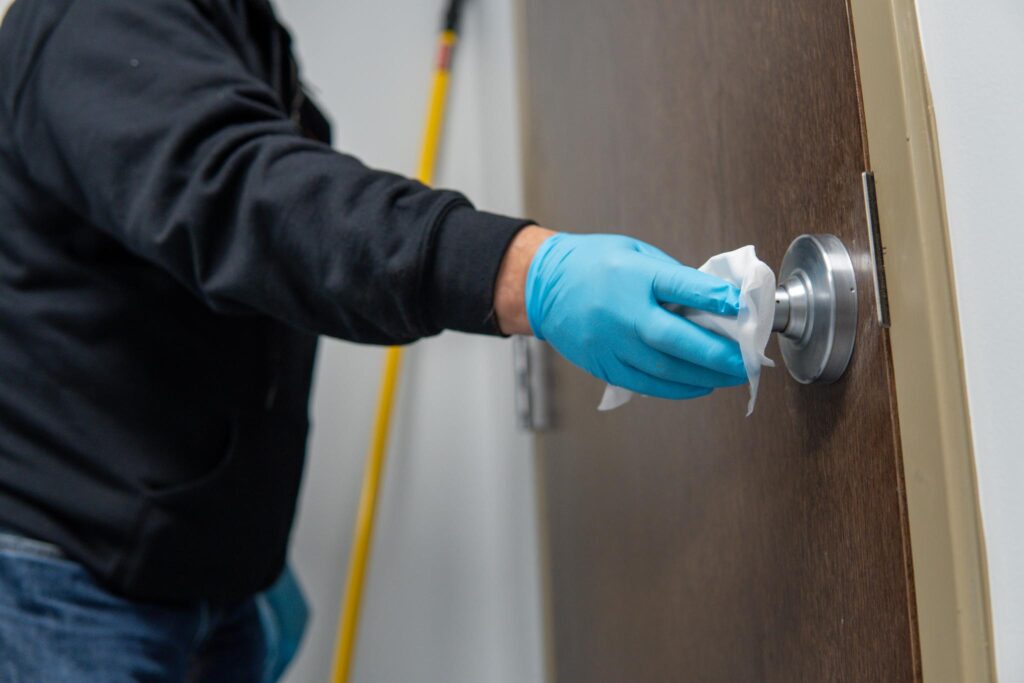If the pandemic taught us one thing, it’s that pathogens can survive on different surfaces for longer than we once thought. This led to an increased awareness of surface infection transmission, which has since prompted many facilities to enhance their cleaning and disinfection standards. Today, in healthcare facilities, preventing the spread of multidrug-resistant organisms (MDROs) is of utmost importance. These dangerous pathogens can survive on surfaces and equipment, leading to potentially deadly infections in vulnerable patients. This brings up an essential question—how long can MDROs live on a surface? Here, we’ll cover everything you need to know about MDROs, how long they live on surfaces, and how to eradicate them.
What is an MDRO?
MDROs, or multidrug-resistant organisms, are bacteria that have developed resistance to various antibiotics over the years. This means they’re fairly difficult to treat, as they don’t respond well to normal treatments. MDROs can, therefore, cause serious issues in vulnerable individuals. Although this doesn’t necessarily mean the worst, their resistance to treatment makes them challenging to manage. MDROs are typically found in healthcare settings such as hospitals and long-term care facilities but can also be found in the community.
Some of the most common examples of MDROs include Methicillin-resistant Staphylococcus aureus (MRSA), Vancomycin-resistant Enterococci (VRE), and Carbapenem-resistant Enterobacteriaceae (CRE). These bacteria can cause a range of infections, including skin and soft tissue infections, pneumonia, urinary tract infections, and blood infections. However, MDROs are much more rare than traditional healthcare-associated infections (HAIs).
What Causes MDROs?
MDROs develop when bacteria are exposed to antibiotics over time and adapt to survive in the presence of treatment. This causes bacteria to acquire resistance through a variety of mechanisms, including mutations in their DNA or through the transfer of resistance genes from other bacteria.
Most commonly, the development of MDROs stems from the overuse or misuse of antibiotics. Specifically, if antibiotics are prescribed unnecessarily or used improperly, resistance to treatment can develop. This is one of the reasons why it’s so important to follow your doctor’s prescription until it’s done, even if you start to feel better. Additionally, the use of antibiotics in agriculture and animal husbandry can also contribute to the development of MDROs.
How Do Multidrug-Resistant Organisms Spread?
MDROs are a growing concern for healthcare facilities worldwide. Since these bacteria have become resistant to several different antibiotics, they can be difficult to control. Without proper proactive care, these bacteria can spread from person to person through contact with contaminated surfaces, objects, or bodily fluids.
One of the most common ways MDROs spread is through direct contact with an infected person’s bodily fluids, such as blood or saliva. MDROs can also spread through contact with contaminated surfaces, objects, or medical equipment. For example, if an infected person touches a doorknob, the MDROs on their hands can be transferred to the doorknob. If another person touches the same doorknob, they can pick up the bacteria and become infected.
In healthcare facilities, MDROs can spread through improper hand hygiene and inadequate infection control practices. Staff members who don’t wash their hands thoroughly or frequently enough can inadvertently spread MDROs to patients and other staff members. Additionally, contaminated medical equipment or surfaces can contribute to the spread of MDROs within a facility. This is why it’s imperative to utilize high-quality medical-grade cleaning in your facility.
Do They Always Cause Illness?
Contrary to what you might expect, not all MDROs cause illness, and not all people who carry MDROs become infected. However, people who do carry them are at higher risk of developing an infection if they have a weakened immune system or if they undergo certain medical procedures. MDROs can cause a range of illnesses, from mild infections to more severe instances like sepsis.
How Long Do Different MDROs Live on Surfaces?
The survival time of MDROs on surfaces can vary depending on several factors, including the type of organism, the material, and the environmental conditions. Generally, MDROs can survive for several hours to several days on surfaces such as doorknobs, countertops, and medical equipment.
For example, MRSA can survive on surfaces for up to seven days, while CRE can survive on surfaces for up to four months. However, proper cleaning and disinfection can help reduce the risk of MDRO transmission from contaminated surfaces. In healthcare facilities, regular cleaning and disinfection can eradicate MDROs from surfaces, thus decreasing the risk of transmission among patients or employees.
The Importance of Infection Prevention and MDROs
Since MDROs can live on surfaces for quite some time, measures need to be taken to prevent their spread. This is crucial to overall patient safety and a reduction in the risk of HAIs. Infection prevention measures such as hand hygiene, proper cleaning and disinfection of surfaces and equipment, and appropriate use of antibiotics can help reduce the risk of MDRO transmission.
Healthcare facilities should have infection prevention and control programs in place that include regular monitoring for infections, education for staff and patients, and appropriate isolation precautions for infected individuals. Additionally, partnering with a medical-grade cleaning company like Bee Line can help you strengthen your peace of mind while enhancing the safety of your facility.
How to Prevent the Spread of MDROs in Your Facility
Preventing the spread of MDROs requires a multidisciplinary approach that includes both members of your healthcare team and professional medical cleaners. Some key strategies to help you reduce the risk of MDROs in your healthcare facilities include the following:
Hand Hygiene
All staff, patients, and visitors should practice good hand hygiene by washing their hands regularly with soap and water or using alcohol-based hand sanitizers. To help reinforce this notion, place hand sanitizing stations throughout your medical facility.
Environmental Cleaning
Regular cleaning and disinfection of surfaces and equipment is another crucial aspect of reducing the risk of MDRO transmission. Healthcare facilities should partner with professionals to clean and disinfect patient rooms, surgical sites, public areas, and medical equipment. Bee Line trains all our employees using a replication surgical site and medical facility to ensure they have the knowledge and experience needed to eradicate MDROs and other pathogens. We also utilize an auditing process to make sure that no germs go unnoticed.
Isolation Precautions
Infected individuals should be placed on appropriate isolation precautions to prevent the spread of MDROs to other patients and staff members. This may include placing patients in private rooms, using personal protective equipment such as gowns and gloves, and limiting patient movement within the facility.
Medical Grade Cleaning
Healthcare facilities should use medical-grade cleaning agents, disinfectants, and protocols that have been proven effective against MDROs. Cleaning products should be used according to manufacturer instructions and on a regular basis to maintain a safe environment for patients and staff members. The best way to ensure that you’re making the most of your efforts is to partner with a medical-grade cleaning professional like Bee Line.
Bee Line has certified managers that carry a CMIP (Certificate of Mastery in Infection Prevention) to train employees that oversee medical sites. These managers carry vast knowledge in microbiology, precautionary safety measures, and infection prevention throughout all stages of disinfection and train all cleaning staff on all infection prevention protocols. We’re fully certified and insured to give you the peace of mind you want and need when hiring a professional medical cleaning company.
To help you eradicate MDROs, germs, and pathogens, partner with Bee Line, the region’s leading medical-grade cleaning company. Our team is equipped with the knowledge, supplies, and protocol necessary for eradicating diseases from surfaces and delivering the highest standards of medical-grade cleaning services. To learn, contact Bee Line today by calling 312-BEE-LINE.
About The Author
Tom Klimaszewski
author
Tom is your go-to-guy for any health and safety concerns on-site! Tom has lots of experience as a Safety and Compliance Manager in commercial cleaning, healthcare, office, airport settings, with his education in Environmental Studies. He has earned his Certificate Mastery in Infection Prevention (CMIP) and Trainer for Certified Surgical Cleaning Technician (T-CSCT), so to say he’s knowledgeable would be an understatement. When he’s not combatting germs, you can find Tom painting, writing songs, hiking, fishing, and belting out his favorite tunes at karaoke! His favorite part of working with Bee Line is the collaborative and supportive environment.




